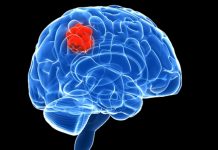 While most of us know that lifestyle is a contributing factor to adults developing cancer, the same is not true for children to that extent.
While most of us know that lifestyle is a contributing factor to adults developing cancer, the same is not true for children to that extent.
While a sedentary lifestyle and poor dietary habits can contribute to cancer, as can smoking and substance abuse, the same can hardly be said for children developing cancer.
However causative factors have been detected to have some influence before birth; and, it is suggested even before conception. For instance dietary habits such as eating excessive amounts of cured meats have been seen to be contributing factors for childhood cancers.
Ionizing radiation is one of the factors that can be seen to increase risk of cancer development among children. It was years ago that an increased risk of developing cancer was seen in children who had been exposed to antenatal x-rays.
This is the reason that pregnant women are routinely asked to refrain from having x-rays taken and that ultrasounds have replaced this requirement for x-rays.
Ultrasounds do not present the same risk for developing childhood cancer that x-rays do and are considered safe rather than any kind of contributing factor to cancer risk.
Studies have shown that even living in proximity to nuclear plants does not significantly increase risk of developing childhood cancer though one study conducted in vicinity of the Sellafield nuclear plant in the UK did show trends of excessive leukemia however the causal link has not been sufficiently established.
Sometimes exposure to infections can up the chances of childhood cancers. For instance Burkitt’s lymphoma, Hodgkin’s disease and nasopharyngeal carcinoma (all associated with Epstein-Barr virus), liver carcinoma (hepatitis B) and Kaposi’s sarcoma (HIV and HHV8) have been observed, however this is not a substantial or very significant portion of childhood cancers.
Some drugs and medication have been seen to increase risk of cancer among children and studies have shown the carcinogenic nature of many medications that may have been ingested by a pregnant mother or child to increase such risk.
Environmental toxins include exposure to toxins within the womb as well as after birth according to some experts. Children who have higher exposure to certain environmental factors, can prove to be carcinogenic in children.
Young children and unborn children undergo quick and frequent cell division that can also result in mutant frequency also rising.
Knowing the risk factors can give parents better insight into the causative factors for childhood cancer so that they are on the lookout for any symptoms related to cancer in a child.
















